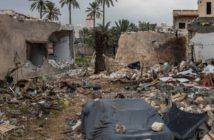Source : Arab News
(MENAFN – Arab News) On the second anniversary of the outbreak of the Tunisian uprising, which triggered a wave of popular protests across the region in what became the Arab Spring, it is now clear that the euphoria and optimism which accompanied these revolutions are all but gone.
People rose against decades of despotism demanding freedom, economic and social justice. For a while emancipated countries appeared to be moving in the right direction, but now the scene is markedly different with signs of deep divisions gnawing at post-Arab Spring nations, especially Tunisia and Egypt. Most importantly is the fact that economic conditions have worsened while the schism between Islamist and secular forces over the future of the civil state has never been wider.
Primarily, the Arab Spring was about young people venting their anger on regimes that had failed to confront the chronic problems of unemployment, poverty and corruption. Today the intense debate has shifted to the more austere issue of the nature of society people want, with Islamist forces, riding on an initial wave of public support at the polls, now appear to be imposing their agenda of Shariah law and the religious state.
When young Arabs revolted in Tunisia, Egypt, Libya and Yemen, no one anticipated that political Islam will emerge as a major force on the political scene. But elections in Tunisia and Egypt delivered victory to two distinct Islamist groups; the moderate Muslim Brotherhood and the more conservative Salafists. In Libya the Islamists did not do as well, but armed militant groups remain an important player. In Yemen, where elections are yet to be held next year, the battle will be between traditional tribal forces, Islamists groups and fragmented movements representing young Yemenis who support a civil state.
So two years later how does the region look? And where do countries affected by the Arab Spring stand?
In Tunisia the ruling coalition led by the Islamist Enahada Party, which is an offshoot of the Muslim Brotherhood, has failed to contain the widening rift between radical Salafist groups and secular forces, now spearheaded by the largest workers’ union in the country, the UGTT. Anti-government protests have become a regular event and in many cases the authorities have resorted to force in an attempt to quell public anger. Meanwhile, the economy is suffering as the country struggles with the problems of unemployment and poverty. Tunisia, once the leading Arab country in guaranteeing women’s rights, is now being criticized for doing away with decades of gender equality.
In Egypt and six months after the country elected its first president, the future looks bleak. President Muhammad Mursi has been accused by opposition parties of reneging on promises to work with all political currents to deliver a new constitution and put Egypt on the road of reconciliation and economic recovery. Today the country is polarized between Islamist forces and secular opponents. This week’s referendum on the new constitution underlined the deep divisions that have crippled the economy and unleashed violent confrontations between opposing parties. The opposition believes the president is following a hidden Muslim Brotherhood agenda to turn Egypt into an Islamic state.
Libya remains in turmoil after a bloody war to end decades of totalitarianism under Col. Mummar Qaddafi. The long journey to state building has not started yet. The biggest challenge to the government is to disarm hundreds of thousands of Libyans and disband the militias. Last September’s attack on the US consulate in Benghazi has focused attention on yet another challenge; the existence of Al-Qaeda in Libya.
In Syria the regime of Bashar Assad has chosen to wage war against its own people turning a peaceful uprising into a bloody and protracted confrontation. After more than 22 months, the death toll has crossed the 30,000 mark. More than two millions Syrians have become homeless.
The regime will fight to the hilt and the final battle will last for several months if not more. It is the day after that worries many. Syria could face partition and prolonged sectarian wars. The role and influence of radical religious groups in the shaping of Syria’s future will be the next big story.
Elsewhere the blowing winds of the Arab Spring have had gentler effects on other regimes.
In Jordan two years of peaceful protests demanding political reforms have delivered some gains. Political uncertainty coupled with economic difficulties will haunt the kingdom for months to come. The turmoil in Egypt and Tunisia has sedated the public, for now, but while this may have undercut the influence of the country’s Islamists, their presence on the scene remains crucial. The biggest challenge for the country today is dealing with its disenfranchised youth.
The Arab Spring, euphemism for peaceful protests calling for democracy and economic justice, has come and gone. Today the struggle is between modernity and revisionist forces fighting to define the shape and nature of the Arab state in the 21st century. The transition will be long and arduous with many setbacks in the process.
.






